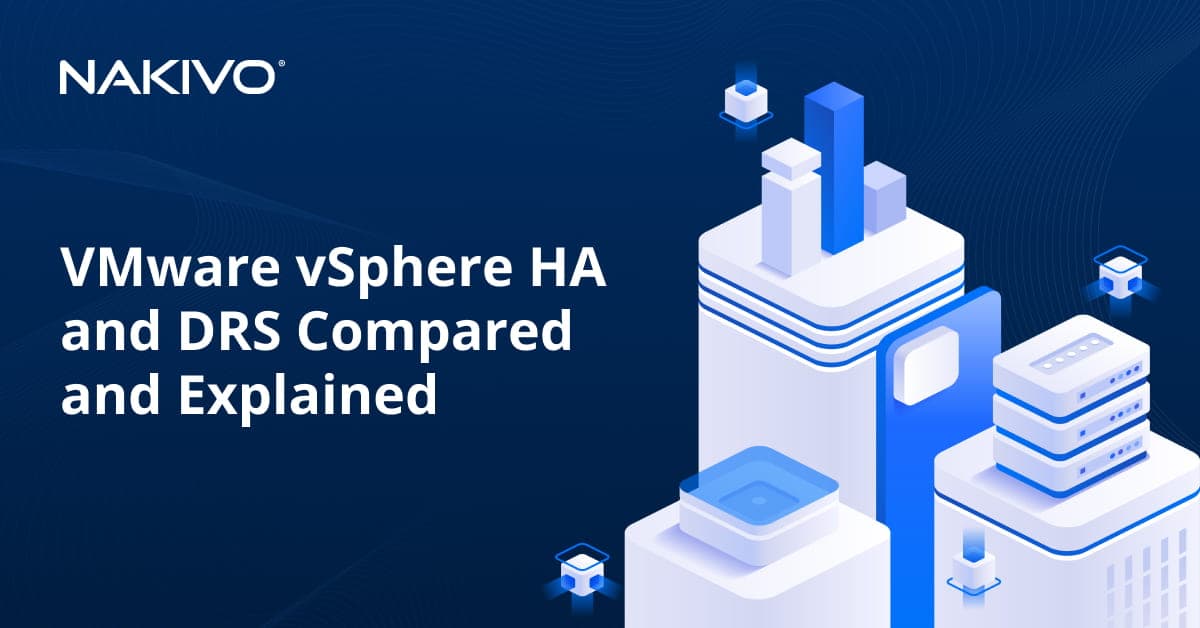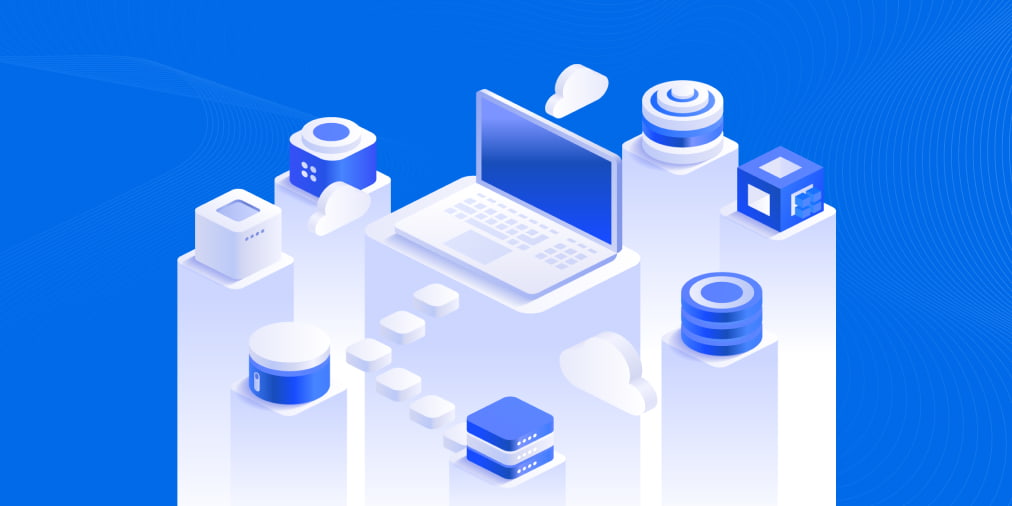The Case for Endpoint Backup in the Age of Cloud Storage
How we work is more digital and globalized than ever. Working remotely or having employees and collaborators all over the world has become routine for companies. “Bring your own device” (BYOD) settings provide added value, but they are also a data security challenge.
Endpoints are one of the weakest parts of an organization’s network. According to research by IDC, 70% of breaches originate from endpoints. That’s why endpoint backup is a good place to start if you’re figuring out how to secure your network. In this blog post, you will learn how endpoint backup and recovery can improve the overall protection of your environment.
Everything You Have to Know about Endpoint Backup
What is endpoint? An endpoint is any device used for producing, sharing, accessing and saving information and connected to a network. It can be a laptop, desktop, tablet, mobile phone, point-of-sale (POS) device, manufacturing machine, IoT device, etc. These are input devices at the end of any network.
Endpoint backup involves saving the data on each device to an external location at regular intervals. The main difficulty is that a company has to protect its whole network, while hackers only need to compromise one single device and to infect all of them.
The Main Challenges of Endpoint Backup
1. Remote work
There are many tips and best practices to integrate into the workflow to make remote work more secure. The best place to start is educating your team on cybersecurity and confidentiality.
2. Employees
When it comes to the team members, you should pay special attention to newcomers and those who depart. As for the new members, it is crucial to educate them and integrate new endpoints into the existing network. On the other hand, employees that leave may pose risks to data security. That’s why a well-elaborated non-disclosure agreement is a must.
3. Underestimating ransomware
Without a comprehensive endpoint security strategy, your organization’s chances of having its whole network infected with ransomware is extremely high. Cybersecurity Ventures claim that a company will be infected by ransomware every 11 seconds by the end of 2021. The cost of the damage might rise to $265 billion annually by 2031.
4. Individual backup
The absence of a comprehensive backup and recovery approach often leads to DIY backups by individuals. It can result in having no visibility or control over the data. Therefore, it is essential to back up VMware, perform Microsoft Hyper-V backup and protect other physical and virtual workloads you have with a comprehensive solution. The absence of a comprehensive backup and recovery approach often leads to DIY backups by individuals. It can result in having no visibility or control over the data. Therefore, it is essential to back up VMware, perform Microsoft Hyper-V backup and protect other physical and virtual workloads you have with a comprehensive solution.
5. Forgetting about e-discovery
Endpoint backup isn’t only a way of preventing data loss. It is vital to have all the information organized and in place. In this case, if any legal issues arise, your business will save money and time by finding the necessary data promptly.
How to Secure Endpoints?
1. A cybersecurity culture
Educate your employees about cybersecurity best practices. Consider the following aspects:
- Ensure that every user has complex passwords to access their devices.
- Ensure your employees don’t have administrator access.
- Make sure that each network user downloads security patches regularly.
The majority of cyberattacks happen because of careless attitudes and a lack of knowledge. That’s why it is relevant to build a security culture in your company. The risk of infection is much lower when the employees know how to protect their devices from the most common malware types.
2. An organized and controlled network
Your network has to be in order. Any device that has an internet connection is vulnerable. That’s why it’s crucial to control and keep track of each endpoint. Don’t let your user connect to the network with just any device. First, assess every endpoint and make a vulnerability test. Ensure that only approved devices connect to the company’s network. Using this simple procedure, you can also prioritize each endpoint according to the threat level of each device.
3. Advanced protection
Some businesses think that antivirus is the answer to all threats. Of course, it is a necessary component of endpoint protection, but an antivirus alone isn’t enough. To minimize the risk of hacker attacks, you should consider advanced protection features, such as event log collection, application whitelisting, real-time protection, etc.
4. Updates
Many users neglect updates. This is a huge mistake. If you want to keep your network protected, implement regular patches and licensing updates. Often, new solution versions remove the bugs that can potentially make your user’s devices vulnerable.
5. Automated detection
Endpoint detection and response (EDR) is a crucial solution for protecting endpoints and, as a result, the whole network. EDR identifies signs of breaches. The identification provides valuable information for threat analysis and monitoring. Hackers mainly use automated solutions for their attacks. That’s why EDR can recognize suspicious activity and respond to it.
Another relevant part of the strategy is to make your network less accessible for hackers. The longer the attack takes, the greater the chances of hackers leaving your network and moving to another one. For this purpose, automation is a good tool. It makes your network a more difficult target, and that means a hacker would need to devote more money and time to conduct an attack. It might not protect you from an attack specifically targeted at your company, but it will definitely help against “drive-by” malware infections.
Endpoint Backup vs. Cloud Syncing
Why would you need a comprehensive approach to endpoint data backup if you can simply use a cloud-based service? Many companies assume that cloud syncing offers enough security and capabilities for endpoint backup and recovery. However, cloud-syncing services alone can’t protect data from the wide range of potential threats, such as data corruption, ransomware and other types of malware.
Also, if a device gets infected, automatic synchronization would damage all of the copies as well. In addition, if endpoint data is linked to corporate data, malware can affect the whole network. That’s why reconsidering the endpoint backup strategy is crucial for data security. Rather than opting for cloud syncing alone, think of getting a comprehensive backup and recovery solution to protect your data regardless of where each employee is located.
Checklist: How to Choose an Endpoint Backup Solution
To find the perfect endpoint data protection solution for your environment, you have to specify your goals and pay attention to the following factors:
1. Self-service
Today, users work from different locations, in multiple time zones and with a variety of devices. Serving everyone all the time can raise the cost of IT services. To avoid expensive IT helpdesk support, opt for a data protection solution that offers a range of self-service options.
2. Flexibility
Deployment flexibility is crucial for effective protection. Being able to deploy the backup solution on-premises, in the cloud and in SaaS environments gives your company significant freedom.
3. Automation
Process automation is key to improving your organization’s productivity. For this reason, a solution shouldn’t require your physical presence for all of the tasks.
4. Resource optimization
No matter how good the solution is, it shouldn’t slow down the operational flow. That’s why you should pay attention to the options that offer bandwidth throttling, deduplication, network acceleration, etc. It can help meet even the tightest RTOs (Recovery Time Objectives) and save your storage space.
5. Administration
Choose a solution that offers automated features and fair pricing without additional learning curves. Such a solution will save you money and time.
Conclusion
Protecting a company’s network from hacker attacks is a great challenge today. However, one of the crucial steps for minimizing the risk of infection is working with endpoints, as these devices are the most vulnerable components of a network. The only way to have your data protected no matter what is by choosing a reliable backup and recovery solution. Schedule a 30-minute live demonstration of NAKIVO Backup & Replication and check how you can protect your environment.



